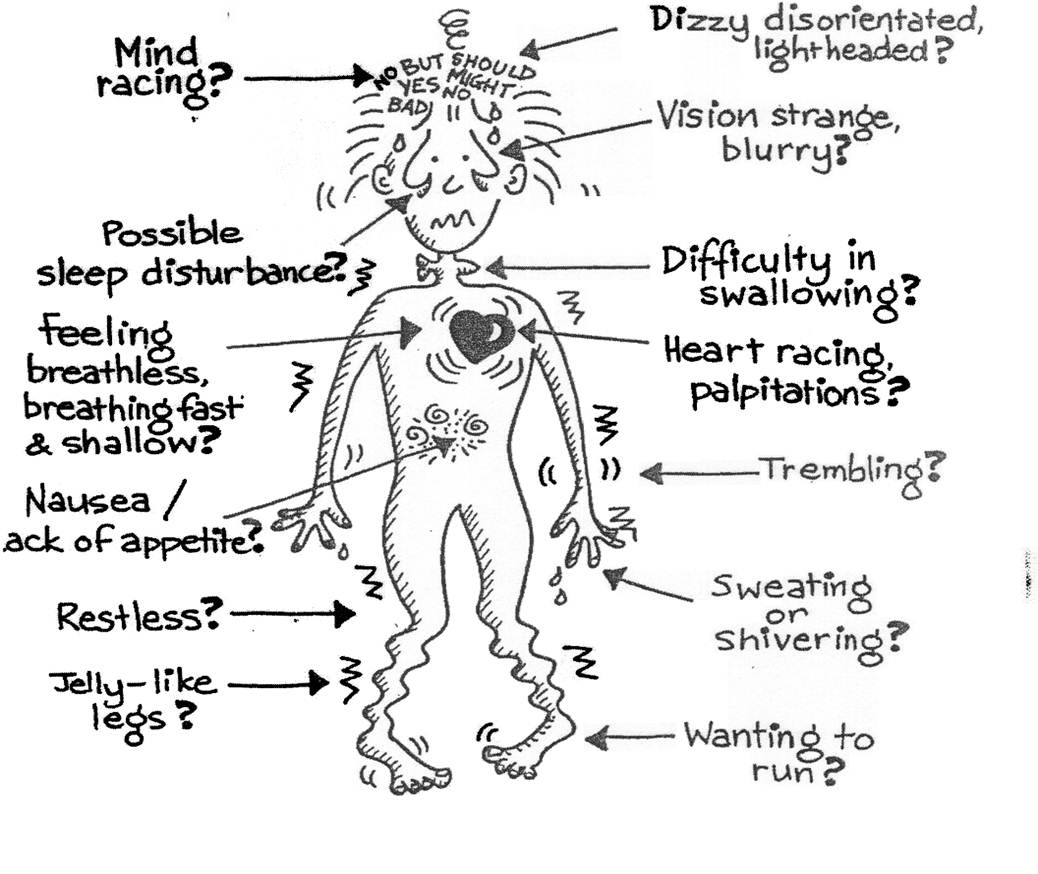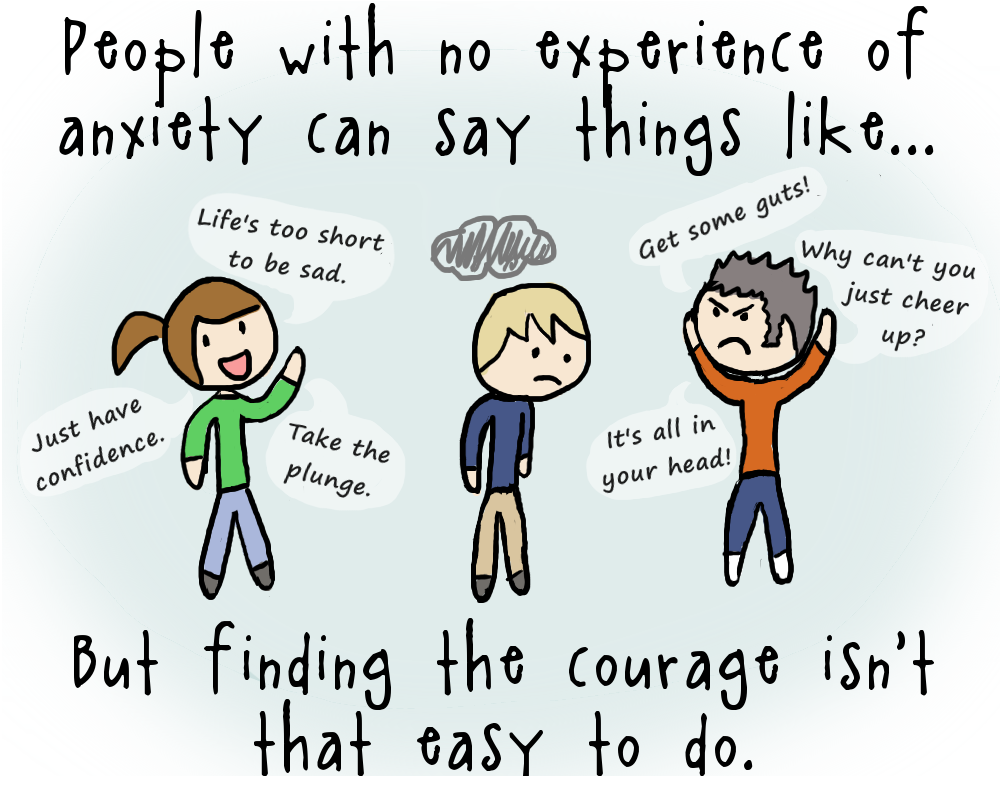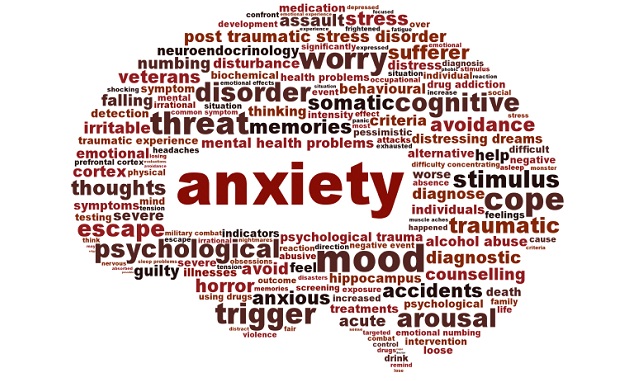Anxiety in Women – Causes, Symptoms, Diagnosis, and Treatment
Every passing day world is becoming self-centered. The social inactivity is leading people to more and more psychological disorders. Personally, there were occasions when I felt a heart tremble and dizziness with some tension, sometimes when I talk to a stranger, sometimes when I hear a negative comment about me or my loved ones but I was never able to differentiate what the problem is, whether it is a stress, depression or anxiety. Here is a note about my study, hope you can solve your confusion. For the time being let’s go through Anxiety.
Unlike fear which is immediate, anxiety is normally the expectation of the coming threat. Anxiety is defined as:-
“An emotion distinguished by feelings of tension, disturbed thoughts and physical changes like increased blood pressure.”
Anxiety disorders are classified mainly into six, each with their own distinct symptoms and treatments. First, let’s go through that one by one.

1) Generalized Anxiety Disorder
This kind of an anxiety we commonly encounter in ourselves or in others we know well. Sometimes a future event or happening is taken over seriously and with little or no provocation people put themselves in a state of anxiety. Thinking the matter again and again without actually resolving might lead to a condition in which we loose concentration in everything we do and forget silly daily routines, which in turn distress thinking why we are forgetting all that. Famous celebrities like Oprah Winfrey, David Beckham, and Jennifer Lawrence suffered GAD anxiety.
2) Obsessive-Compulsive Disorder OR OCD
This particular anxiety becomes a matter of fun sometimes, portrayed by repeated, undesired thoughts (obsessions) or repeated behaviors (compulsions). Repetitive habits, for instance, hand washing, counting, checking, cleaning, etc. are frequently done with the hope of blocking obsessive thoughts. For instance, there are people who are overly hygiene conscious and so wash certain things or take bath many times in a day. Some people get disturbed when a fly is around and they keep on hitting it even if it has gone away.
I feel that these days such kinds of people are many in number. Over usage of hand sanitizers, hand wash, etc. which was once done only by surgeons and medical practitioners after their surgeries. Parents these days are excessively hygiene-conscious so children are losing their good bacteria along with the bad bacteria.

3) Panic Disorder
Some people become panic very often even with little incidents. Panic disorder is a kind of disorder and is identified by sudden and returned episodes of extreme fear characterized by physical symptoms that may involve chest pain, heart throbbing, shortness of breath, dizziness, or abdominal distress. For example, one of my friends becomes so nervous in the sight of a frog that she forgets the social situation she is in, and jumps over tables and chairs and screams!
4) Post-Traumatic Stress Disorder (PTSD)
Post-Traumatic Stress Disorder (PTSD) is a more serious issue. It is an anxiety disorder that can develop after a terrific incident or distress in which critical physical harm happened or the individual was abused. Traumatic occurrences that drive this anxiety involve violent personal attacks, natural or human-caused tragedies, misfortunes, etc. Any kind of present occurrences that are similar to the past may “trigger” the survivor, and hence the anxiety kicks in.
Women are more likely to develop the PTSD, but anyone who experienced an extremely traumatic event may develop a Post-Traumatic Stress Disorder. Criminal attack or rape, Natural hazards, Grave accidents, Warfare exposure, Child physical or sexual abuse, Seeing traumatic events, Imprisonment, becoming refugees, a sudden unexpected death of loved ones, etc. will leave most people in trauma.
5) Social Phobia (or Social Anxiety Disorder)
More people will be able to relate to this kind of anxiety. Social Phobia is characterized by powerful stress and excessive self-consciousness in ordinary social situations. Social anxiety disorder may appear in few situations, such as a fear of speaking in formal or informal situations, or eating or drinking in front of others or in its most difficult form, may be so broad that a person feels symptoms almost anytime they are around other people. These days children misrepresent their addiction to technology and gadgets as social phobia so that they can avoid people and spend more time on games and virtual social media.

Common causes of Anxiety in women
Everyone has a little amount of anxiety. After a certain limit, it becomes an anxiety disorder. Common external factors like stress from work, from school or college; financial stress, relationship stress, stress from an emotional trauma such as the death of a loved one, side effects of medication or medical illness, drug usage, etc. are known factors. There are chances for every individual to have a different cause too.
Researchers don’t know accurately what causes anxiety disorders. Like other forms of mental illness, they could arise from a combination of circumstances, including changes in your brain and environmental stress, and even your genes. The disorders can be running in the hereditary in families or could be connected to damaged circuits in the brain that commands fear and other emotions.
Symptoms of Anxiety in Women – Physical and Emotional
Physical symptoms of anxiety
Anxiety is more a product of the body’s struggle response, anxiety affects a wide range of physical signs. Common physical symptoms of anxiety include high heart beating, sweating, headaches, stomach upset, restlessness, fatigue, dizziness, constant urination or diarrhoea, briefness of breath, muscle tension or twitches, shaking or trembling, insomnia, etc.
Emotional symptoms of anxiety
In addition to the primary anxiety symptoms of irrational and excessive fear and worry, other common emotional symptoms include the following:
-
Feelings of fear or dread
-
Watching for signs of danger
-
Expecting the worst
-
Difficulty in concentrating
-
Holding tense and jumpy
-
Anger
-
Blankness of mind, etc.

Anxiety Diagnosis
Diagnosis tests should be made by a physician or a qualified mental healthcare professional after a complete assessment including a physical test. If a person has symptoms, the healthcare professional will examine and ask for his/her medical history. They may run tests to check the medical illnesses that are causing symptoms. Lab tests cannot clearly diagnose the anxiety disorders.
If the practitioner doesn’t find any medical reason for the condition, they may refer the patient to a psychiatrist, psychologist, or another mental health specialist. Those specialists may ask questions and use tools and testing to obtain the reason for a particular anxiety disorder.
The doctor will examine the duration and intensity of symptoms while diagnosing. They will also check to see if the symptoms keep patient from carrying out normal activities.
Anxiety treatment
Any treatment should be done only by expert physicians and psychiatrists. Anxiety is treated by analysing the symptoms and checking in which type it falls. There are psychological treatments, medications, and management strategies to overcome the anxiety disorders. Just like any other diseases, it is important to know it before it advances.




Recent Comments